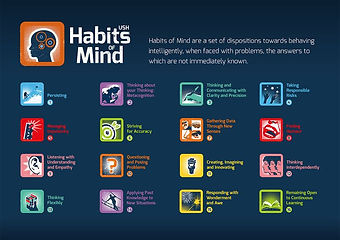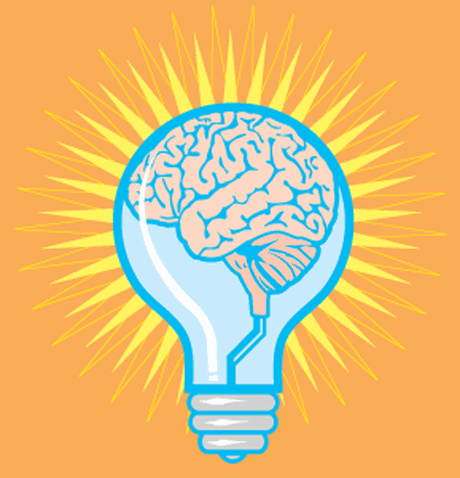
Habits of Mind


Educational outcomes in traditional settings focus on how many answers a student knows. When we teach for the Habits of Mind, we are interested also in how students behave when they don't know an answer. The Habits of Mind are performed in response to questions and problems, the answers to which are not immediately known. We are interested in enhancing the ways students produce knowledge rather than how they merely reproduce it. We want students to learn how to develop a critical stance with their work: inquiring, editing, thinking flexibly, and learning from another person's perspective. The critical attribute of intelligent human beings is not only having information but also knowing how to act on it.
What behaviors indicate an efficient, effective thinker? What do human beings do when they behave intelligently? Vast research on effective thinking, successful people, and intelligent behavior by Ames (1997), Carnegie and Stynes (2006), Ennis (1991), Feuerstein, Rand, Hoffman, and Miller (1980), Freeley (as reported in Strugatch, 2004), Glatthorn and Baron (1991), Goleman (1995), Perkins (1991), Sternberg (1984), and Waugh (2005) suggests that effective thinkers and peak performers have identifiable characteristics. These characteristics have been identified in successful people in all walks of life: lawyers, mechanics, teachers, entrepreneurs, salespeople, physicians, athletes, entertainers, leaders, parents, scientists, artists, teachers, and mathematicians.
A Habit of Mind is a composite of many skills, attitudes, cues, past experiences, and proclivities. It means that we value one pattern of intellectual behaviors over another; therefore, it implies making choices about which patterns we should use at a certain time. It includes sensitivity to the contextual cues that signal that a particular circumstance is a time when applying a certain pattern would be useful and appropriate. It requires a level of skillfulness to use, carry out, and sustain the behaviors effectively. It suggests that after each experience in which these behaviors are used, the effects of their use are reflected upon, evaluated, modified, and carried forth to future applications.
Learning and Leading with Habits of Mind. Costa & Kallick (2008), Chapter 2, "Describing the Habits of Mind"
